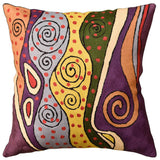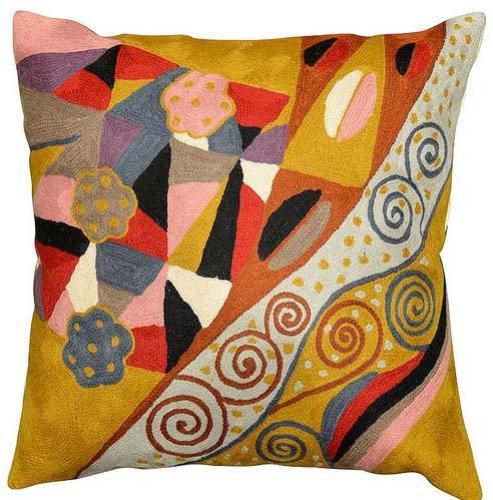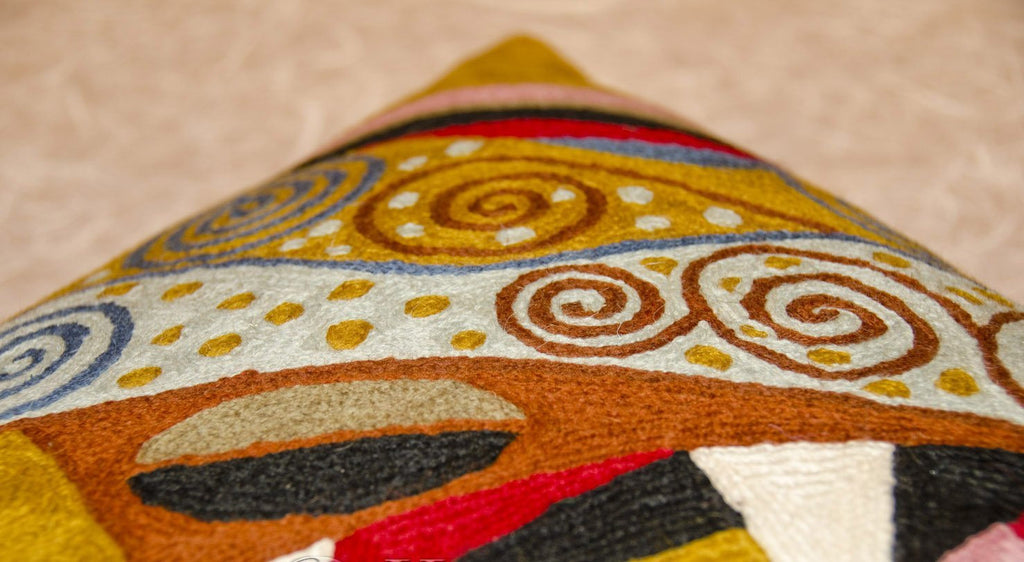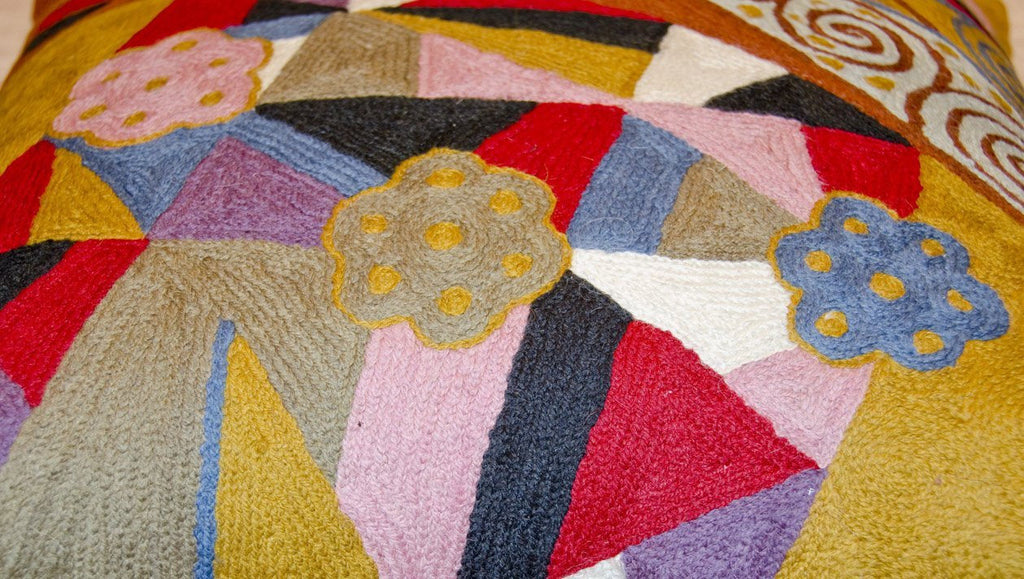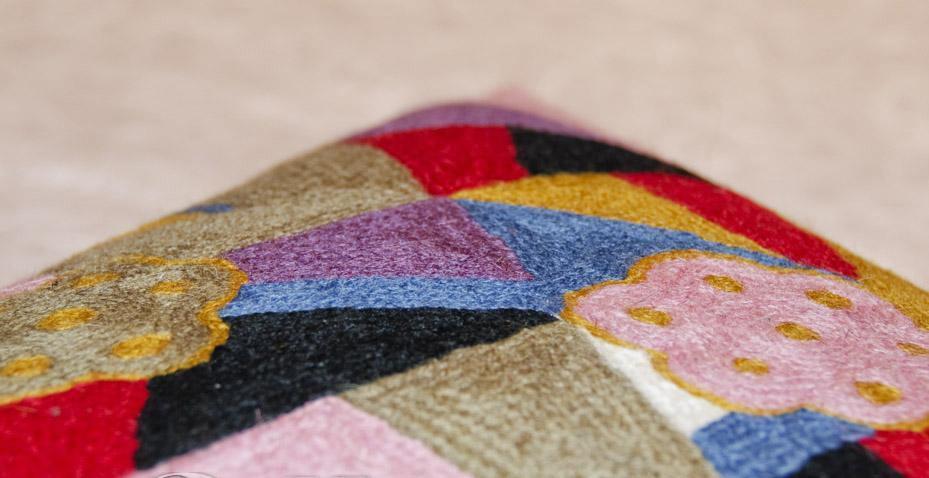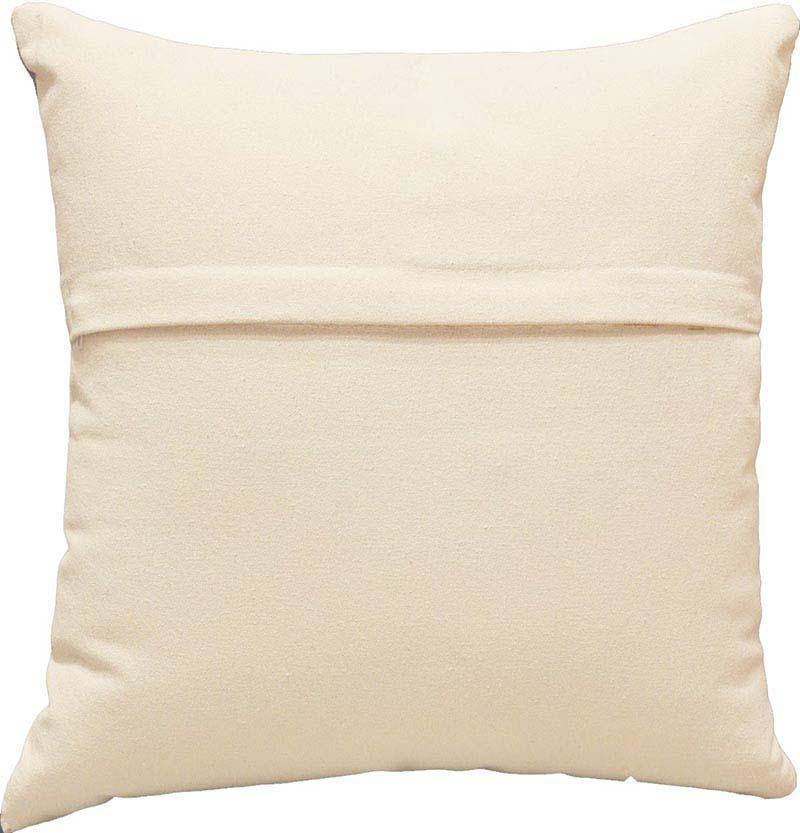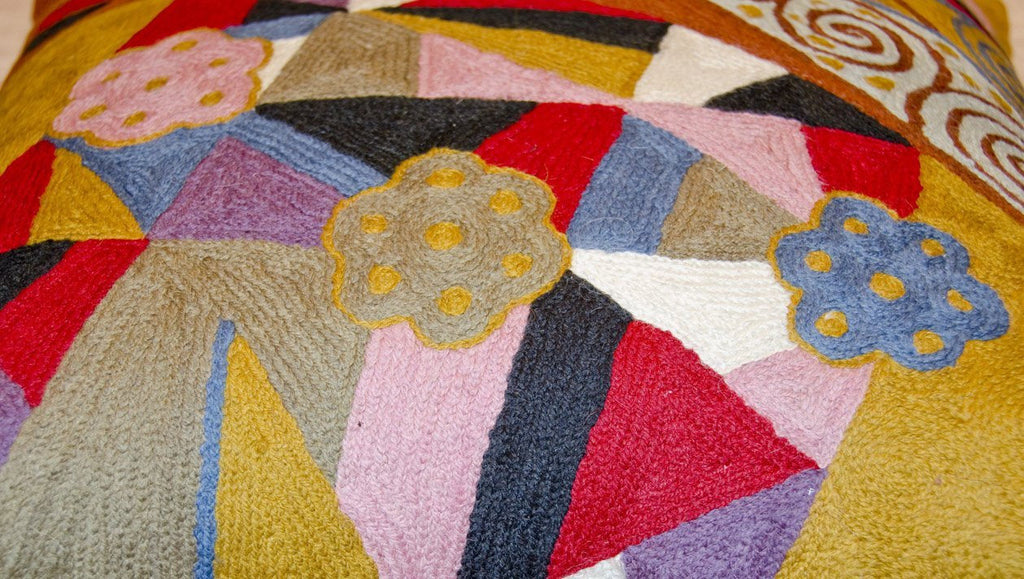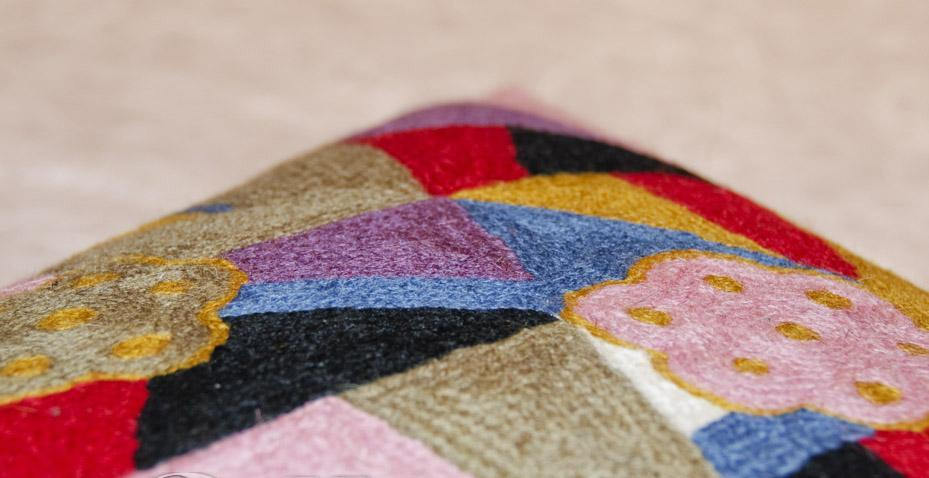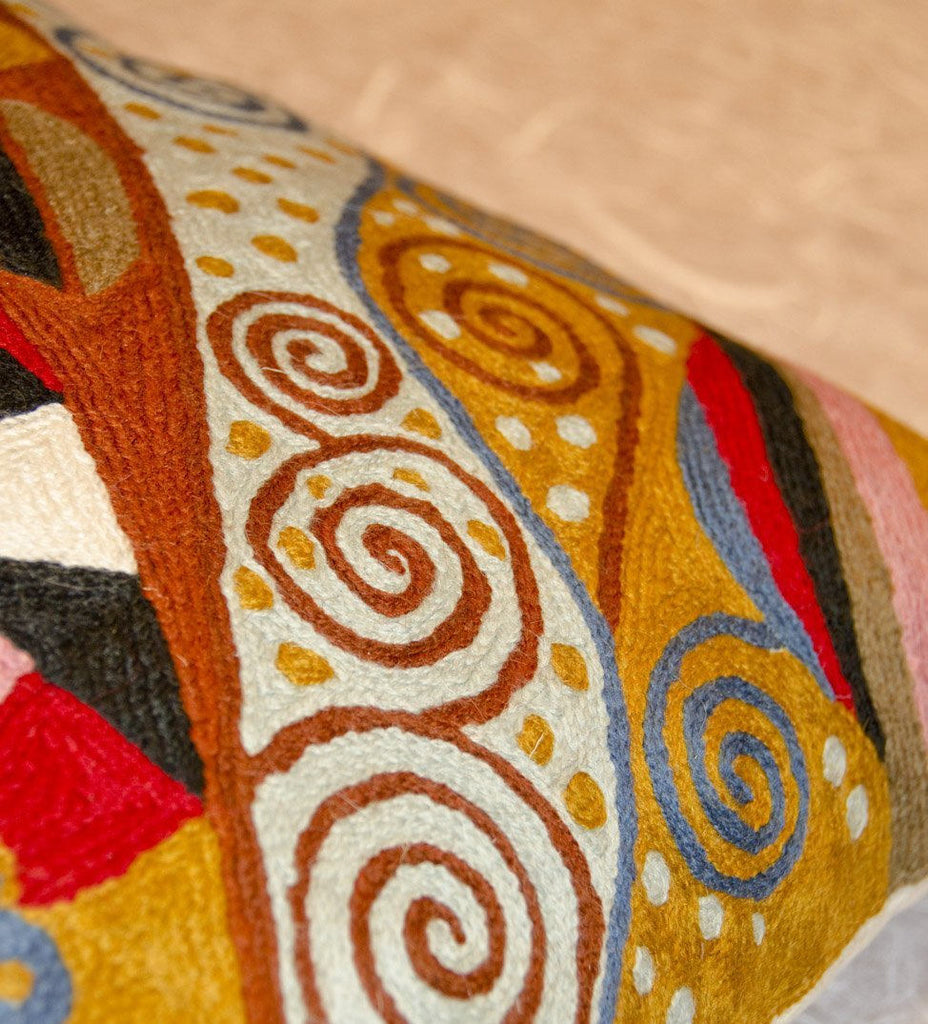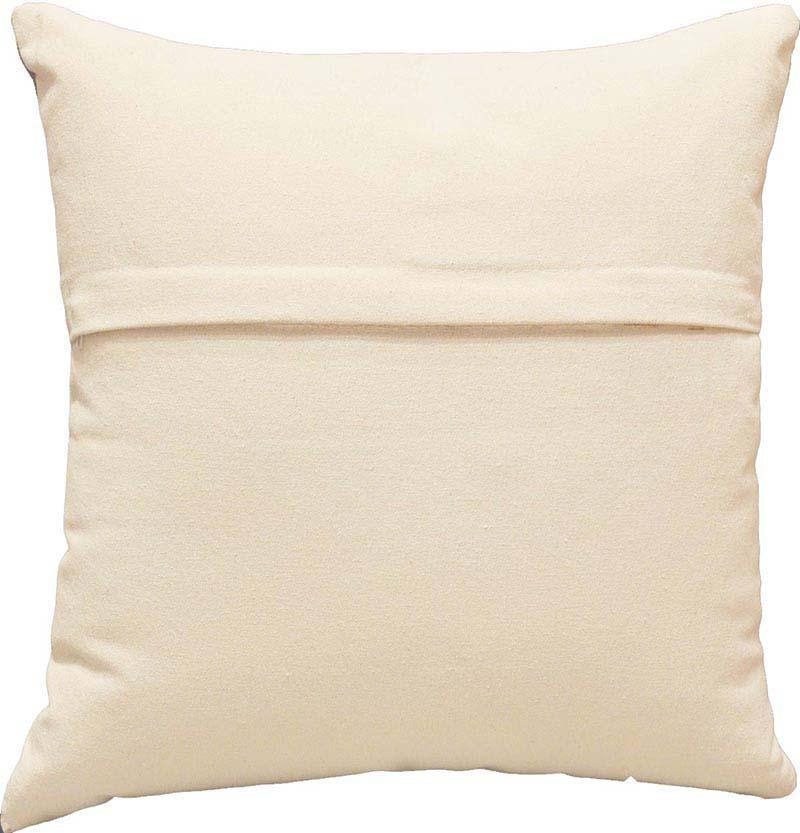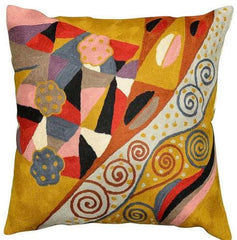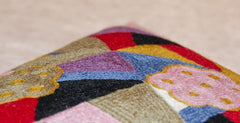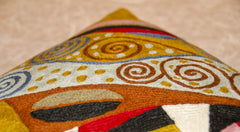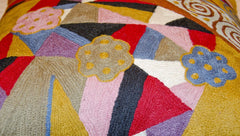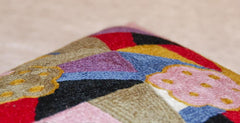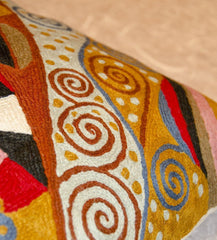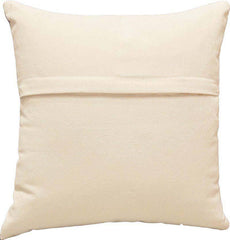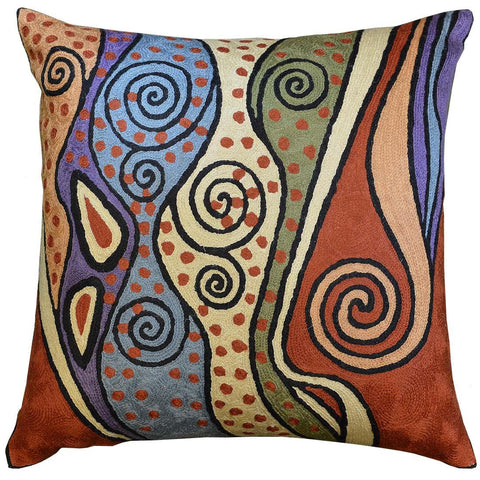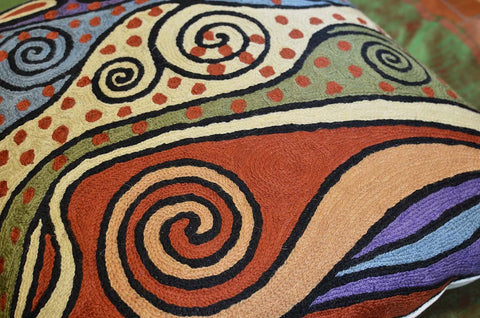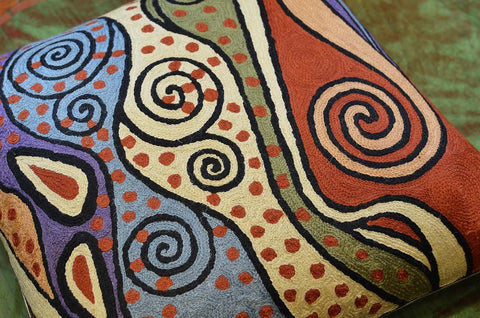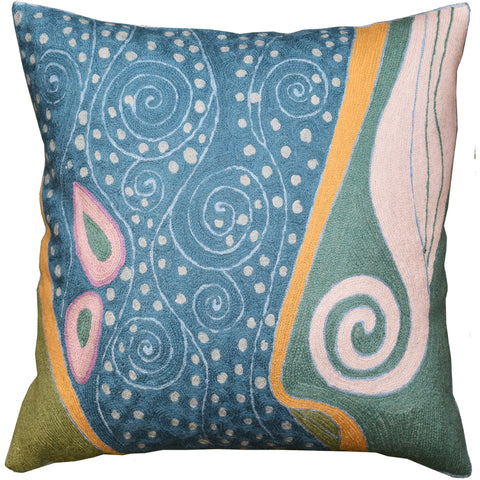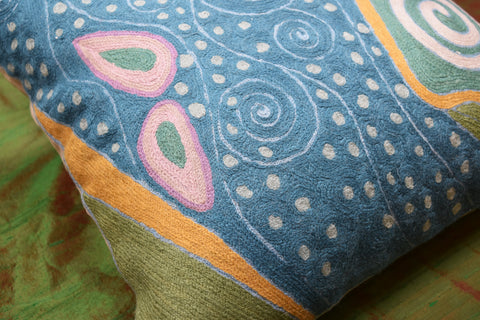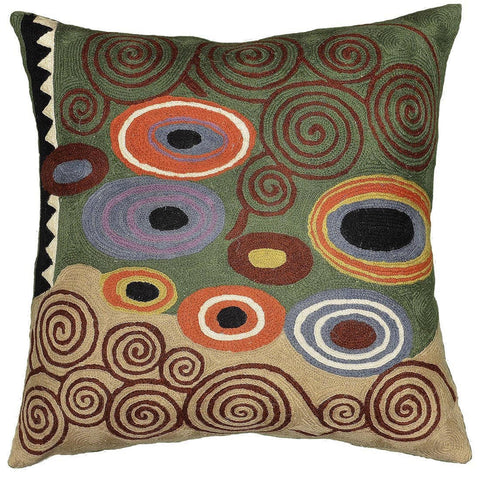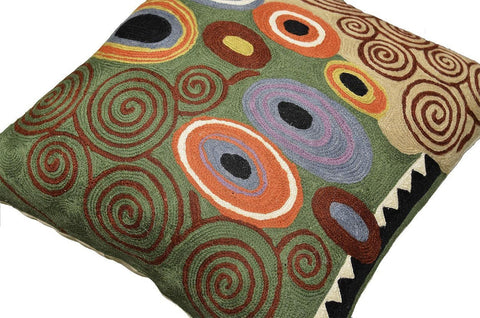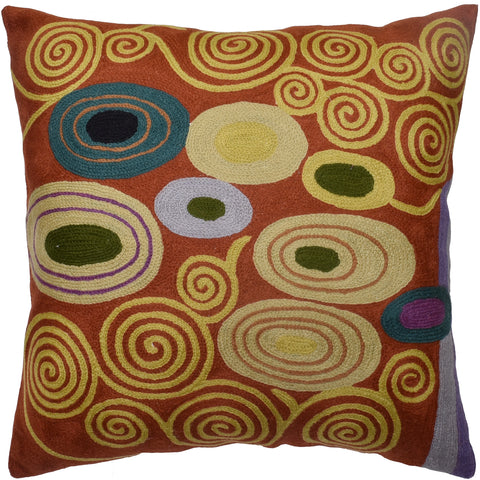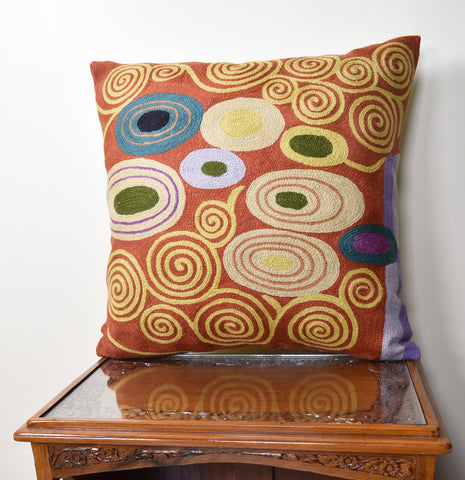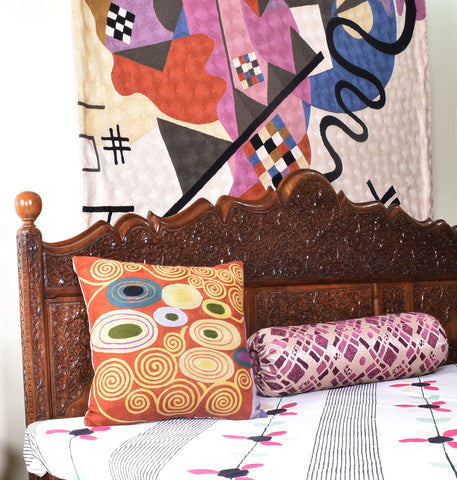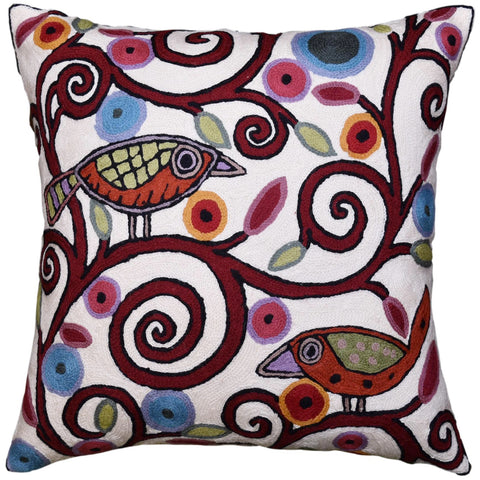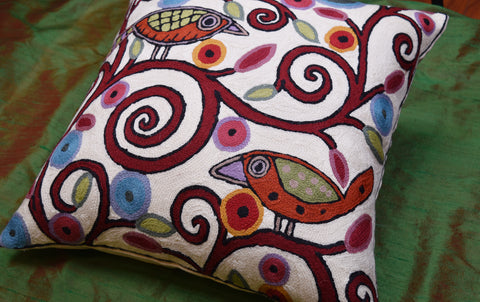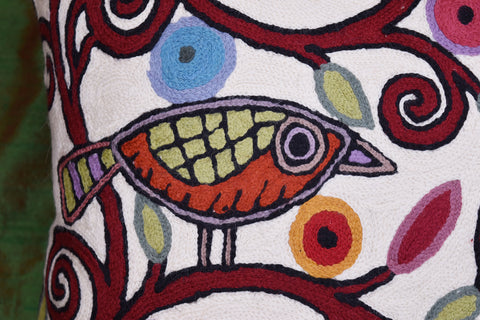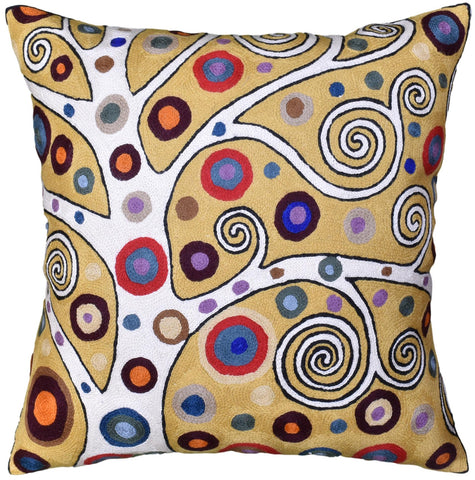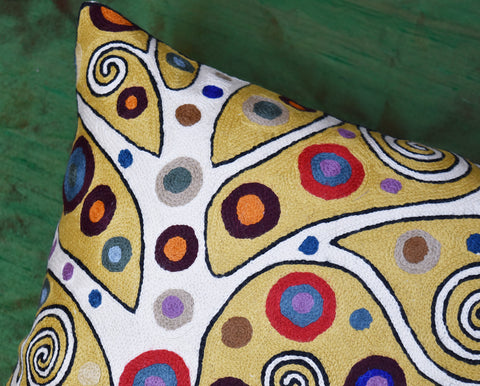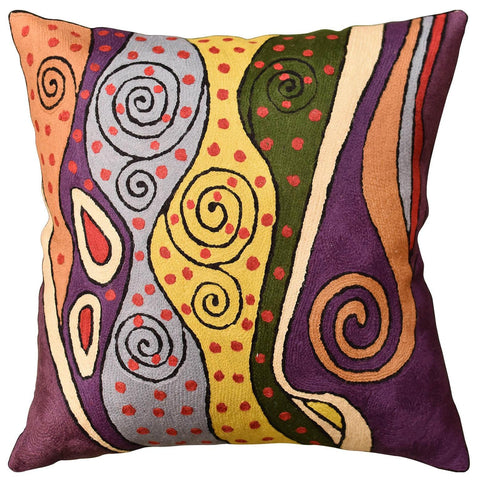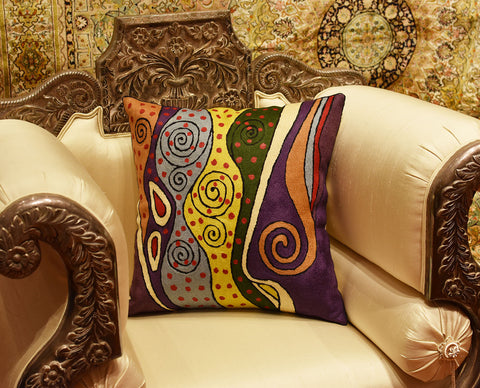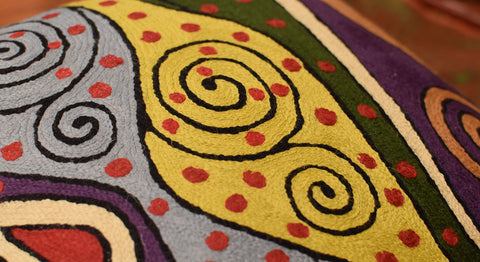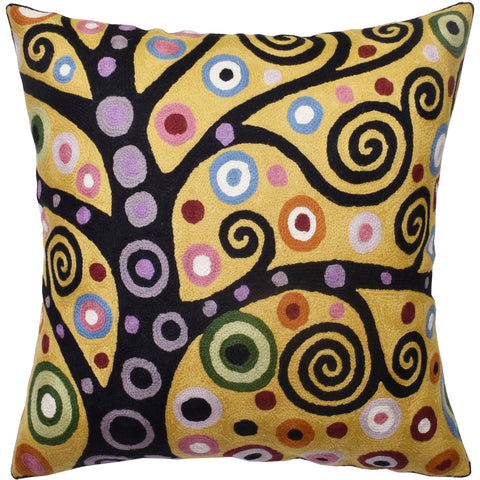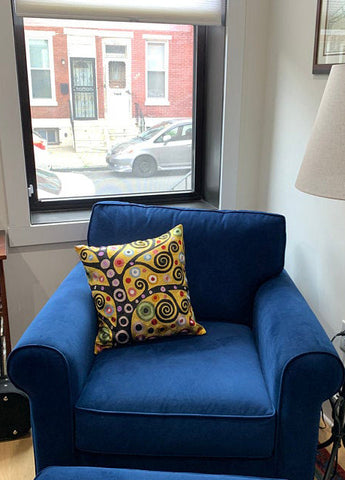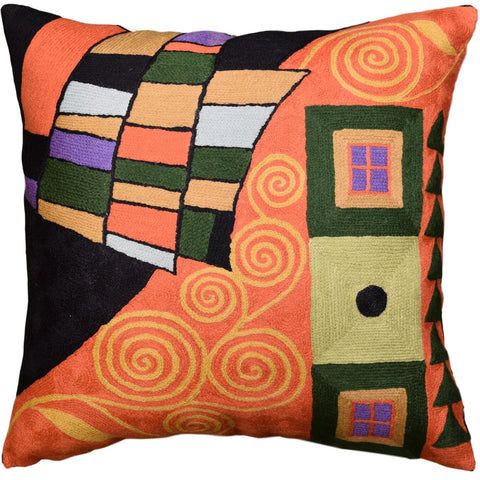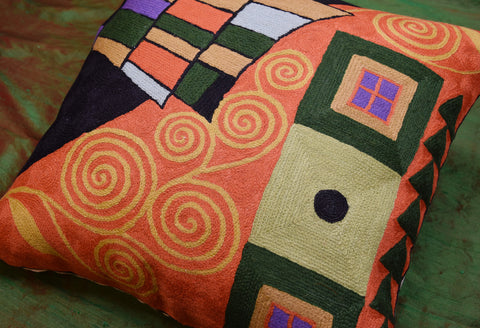Klimt Cushion Cover Signs Of Spring Wool Hand Embroidered 18" x 18"
Klimt Cushion Cover Signs of Spring modern abstract pillow hand embroidered - Seeds, seed pods, tree of life symbols all speak of Gustav Klimt's symbolist paintings. Chaotic colors give it an spirited essence similar to jazz album covers of the 50s (compare Dave Brubeck's 'Take 5' album cover). A 15th century handcraft based on 19th century painting reminiscent of 20th century album covers done by 21st century handcrafters. What could be more perfect? The hand-dyed Kashmir wool embroidery on a cotton back and base makes a durable and easy care cover to update the old or accentuate the new.
- Composition: 70% Soft Wool, 30% Cotton
- Size: 18' x 18' (45 cms x 45 cms)
- Pillow Insert not Included (Only Cover is on Sale)
- Hand embroidered in Village Cottage Units
- Backing: Canvas (See the Last Picture)
These modern pillow covers are handcrafted by Kashmiri artisans, and are of the finest chain-stitch embroidery in the world.Created of soft Kashmir wool over cotton, this all-natural cover makes an enduring impression. A close-up view of this abstract pillow cover allows you to see the amazing chain-stitch embroidery work of master artisans who have practiced this art their entire lives.This abstract decorative pillow cover could grace the cabin of your boat or the chair in your solarium and yet be equally as comfortable in your den. The eye-popping color and pattern of this modern throw pillow is just what the designer ordered to create a fiery focal point in your decor. Perfect wherever you need a splash of color, this art work pillow creation is as durable as it is beautiful. Easy to care for, this cushion cover could spark up an old throw pillow or grace a new pillow form. Gustav Klimt is remembered as one of the greatest decorative painters of the twentieth century, and also produced one of the century's most significant bodies of erotic art. Initially successful as a conventional academic painter, his encounter with more modern trends in European art encouraged him to develop his own eclectic and often unique style.Klimt believed in the equality of fine and decorative art, and was one of the most influential exponents of Art Nouveau, the movement that spread throughout Europe in the late 19th century.



